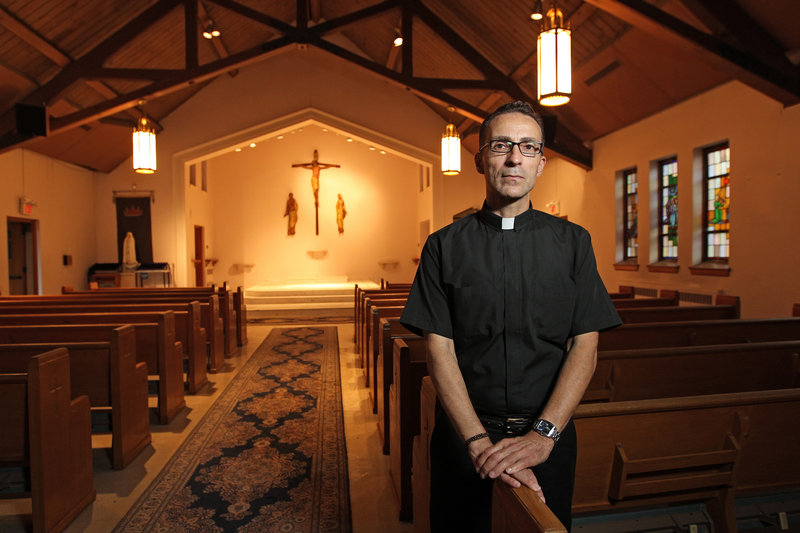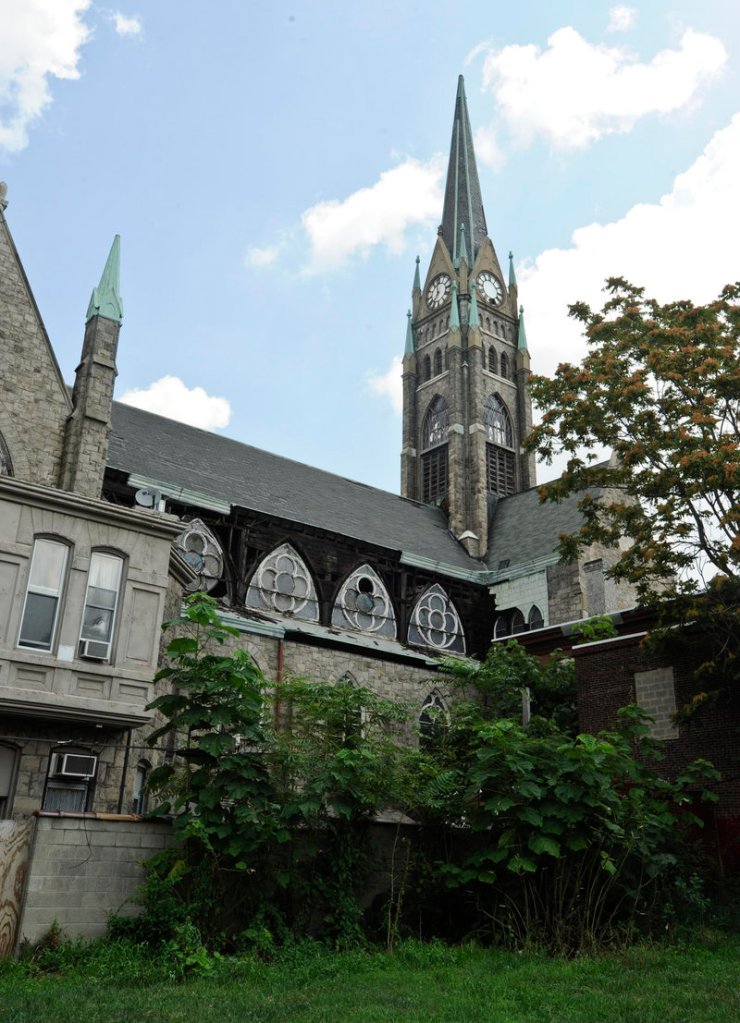PHILADELPHIA – Hunger, health care, and urban violence are the usual subjects of concern when the Religious Leaders Council of Greater Philadelphia gathers for its semiannual meetings.
But at the spring 2011 session, a new topic was cast into the mix: real estate.
A member noted that he was grappling with a growing stock of vacant churches. Hoping for a solution from his high-placed peers at the conference table, he got instead a chorus of me-toos.
“I always thought I could sell my buildings to you,” a prelate of one Protestant denomination joked to another.
The group erupted in laughter.
“But it was kind of sick humor,” Episcopal Bishop Charles E. Bennison Jr. recalled. “We all have these empty buildings now. We’re all in trouble.”
They are costly to maintain and increasingly difficult to sell, but painful to demolish, even as they decay into neighborhood eyesores.
There are now so many shuttered houses of worship — at least 300 estimated across the Philadelphia region — that the anxiety over what to do with them has spread beyond religious circles and into City Hall and suburban town councils.
One real estate website, LoopNet.com, had 16 Philadelphia churches listed for sale last week, ranging in size from 1,700 to 52,000 square feet, and in price from $110,000 to $5.2 million.
Among them is a 6,775-square-foot edifice, built of tan brick and topped by a copper cross and onion domes. A tall, gray stone Gothic-style church in “poor to very poor” condition can be had for $250,000. An additional 64, ranging from storefronts to stately giants, are on LoopNet’s site but unpriced.
The surfeit is “a big problem that does not lend itself to any ordinary solutions,” said Philadelphia Deputy Mayor Alan Greenberger, an architect and executive director of the city planning commission.
The soaring steeples, lofty ceilings, vaulted arches, and stained glass that imbue religious structures with a sense of sacred singularity, he said, also make them “difficult to readopt” to other uses.
On the Main Line, the hollow presence of the First Baptist Church of Ardmore, closed last year and threatened with demolition, is prompting the Lower Merion Township, Pa., commissioners to write an ordinance easing the way for developers to convert houses of worship to commercial and residential use.
First Baptist’s demise is not an anomaly.
Within Lower Merion’s 24 square miles, “we’re aware of more than a half-dozen churches whose congregations are looking to wind down their operations,” said commissioner Philip S. Rosenzweig, who heads the planning board.
“It used to be that if a congregation was diminished enough, it would combine with another, or sell to a different congregation or religious institution,” he said. “But that’s not the way of the world anymore.”
The Board of Rabbis of Greater Philadelphia estimates that fewer than a dozen synagogues have come up for sale in the past decade. The glutted market is almost exclusively Protestant and Catholic, driven by trends both secular and spiritual.
Young adults attend worship services less often and contribute less money than their elders. In the Roman Catholic Archdiocese of Philadelphia, which has closed dozens of parishes in the past 20 years and nine this year, weekly Sunday Mass attendance is about 18 percent, a quarter of what it was two generations ago.
Among evangelicals, megachurches are flourishing, often at the expense of small local congregations.
Lately, when a struggling church succumbs to such forces and goes up for sale, banks are nervous.
“We’ve had buyers come to us with half the asking price as down payment,” said Bishop Claire Burkat, head of the Lutheran Synod of Southeastern Pennsylvania, “and they still can’t get a mortgage.”
An ecclesial abundance sounds nice, but not to accountants’ ears.
In the Episcopal Diocese of Pennsylvania, comprising Philadelphia and the four suburban counties, there are nine closed churches. Each costs an annual average of $55,000 to maintain.
“That’s nearly half a million dollars we’re not putting toward meeting human needs,” Bennison said. “God must look down and say, ‘Where’s the gospel in this?’ “
The market for vacant Catholic and mainline Protestant churches is made up mostly of fledgling congregations. Many, like New Life Evangelistic, quickly find themselves socked with maintenance bills, and in over their heads.
Kenneth McIlvane, a Deptford, N.J., real estate broker who handles many of the parish property sales in the Roman Catholic Diocese of Camden, N.J, said the inquiries he gets typically are from “startup churches with little or no financial backing.” But he also receives calls from “well-qualified religious organizations looking to expand their ministries.”
Send questions/comments to the editors.




Success. Please wait for the page to reload. If the page does not reload within 5 seconds, please refresh the page.
Enter your email and password to access comments.
Hi, to comment on stories you must . This profile is in addition to your subscription and website login.
Already have a commenting profile? .
Invalid username/password.
Please check your email to confirm and complete your registration.
Only subscribers are eligible to post comments. Please subscribe or login first for digital access. Here’s why.
Use the form below to reset your password. When you've submitted your account email, we will send an email with a reset code.